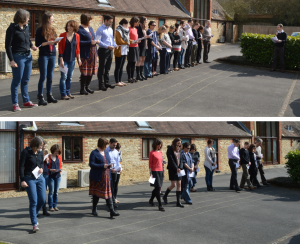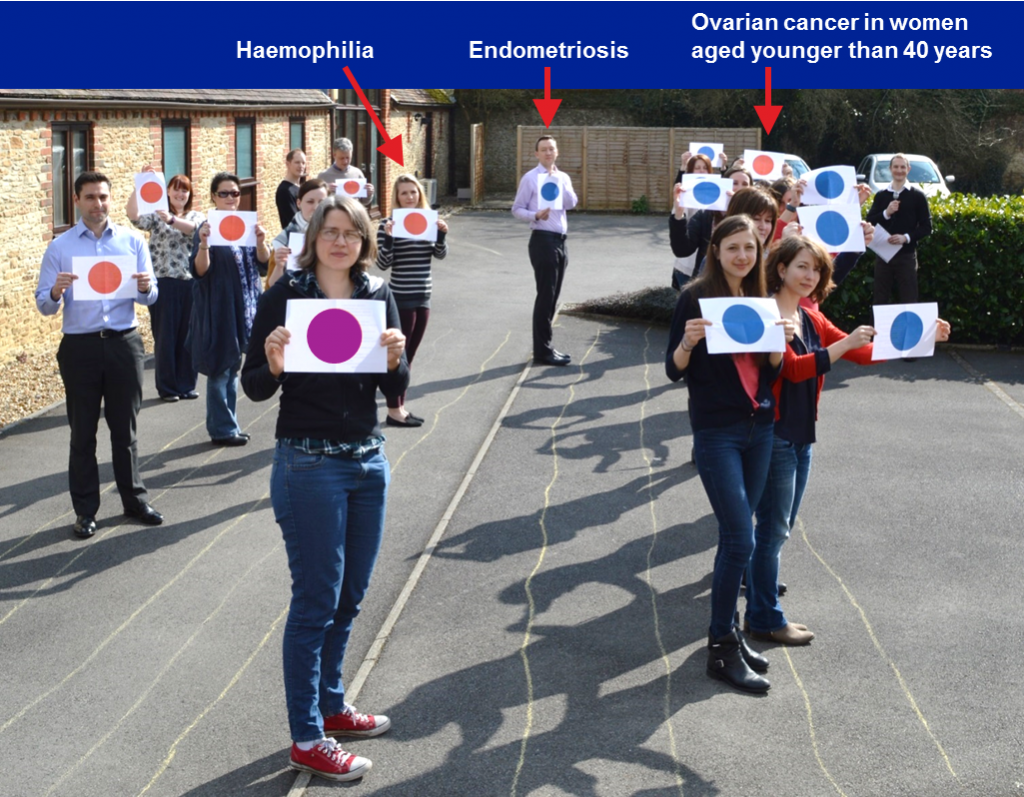Privilege (/ˈprɪvəlɪdʒ/)
‘A special right, advantage or immunity granted or available only to a particular person or group.’
We all know what privilege is, but it can be difficult to appreciate fully how privilege – or the lack thereof – can affect us. It is especially difficult to understand the challenges faced by people with very different backgrounds from our own. As a company with a global presence, we were therefore interested when Buzzfeed released this video of a ‘privilege walk’.

The idea is simple; participants stand in a line and step forwards or backwards depending on how they identify with a series of statements designed to highlight socioeconomic privileges. The questions are worded so that the more privileged participants move forwards and the less privileged participants move backwards. The results are effective, and many of the participants are obviously shocked by where they and their fellow participants were positioned on the ‘privilege spectrum’.
Oxford PharmaGenesis is a HealthScience communications consultancy that has a strong heritage in the rare diseases arena. A rare disease affects fewer than 1 in 2000 people. Particular challenges that these patients face include frequent misdiagnoses, inadequate information and lack of access to effective treatments. Patients with common diseases are far less likely to experience these challenges.
To highlight this in an interactive and visual way, we designed a privilege walk for rare diseases and asked our colleagues to represent a range of common and rare diseases. We read a series of 10 statements to participants and asked them to step forwards or backwards depending on how the statement related to the disease they represented. The statements were split into four main categories: 1) general characteristics of rare diseases; 2) access to information; 3) timely diagnosis; and 4) treatment. If you would like to watch the video, please click here.
As expected, in general, the common diseases (blue dots) finished towards the front and the rare diseases (red dots) finished towards the back. The common diseases included in our privilege walk affect between 7 in 10 and 1 in 17 people, whereas the rare diseases affect between 1 in 2500 and 1 in 200 000 people. Multiple sclerosis (purple dot), although technically a common disease, affects 1 in 600 people, so is considerably rarer than the other common diseases included in the privilege walk and consequently finished in the middle.
There were, however, some outliers. Although endometriosis affects 1 in 10 women of childbearing age, women often experience lengthy diagnostic delays. Thus, endometriosis finished further back than all of the other common diseases. Of particular interest, endometriosis finished behind ovarian cancer in women aged younger than 40 years, which is rare and affects a similar age group, but benefits from the treatment and diagnostic pathways that exist for the more common ovarian cancers that develop in older women. Haemophilia is a rare disease that affects 1 in 10 000 people but finished further forward than other rare diseases because physician awareness of haemophilia is high, information is readily available and effective treatments exist.
 Therefore, although patients with rare diseases usually experience more challenges than those with common diseases, it is clear that individuals with different diseases experience varying levels of ‘privilege’ in terms of access to information, timely diagnosis and treatment. We would like to make absolutely clear that we do not consider patients with common diseases such as breast cancer or heart failure to be ‘privileged’; receiving a diagnosis of any disease is a difficult and potentially life-changing experience. Patients with rare diseases, however, face additional barriers compared with those who have common diseases, and we found that the rare disease privilege walk demonstrated this in a way that was clear and easy to understand.
Therefore, although patients with rare diseases usually experience more challenges than those with common diseases, it is clear that individuals with different diseases experience varying levels of ‘privilege’ in terms of access to information, timely diagnosis and treatment. We would like to make absolutely clear that we do not consider patients with common diseases such as breast cancer or heart failure to be ‘privileged’; receiving a diagnosis of any disease is a difficult and potentially life-changing experience. Patients with rare diseases, however, face additional barriers compared with those who have common diseases, and we found that the rare disease privilege walk demonstrated this in a way that was clear and easy to understand.
If you would like to hold your own rare diseases privilege walk, all you need are some participants to represent their disease of choice and a large space. The statements we used are below, but feel free to use your own. If you do organize a privilege walk, please let us know by using the hashtag #RDwalk or e-mail us at lizzie.perdeaux@pharmagenesis.com.
Privilege walk statements
- If your symptoms developed when you were a child, step backwards.
- Approximately 50% of people with a rare disease are children.
- If you have ever been misdiagnosed, step backwards.
- Nearly half of people with a rare disease receive a misdiagnosis initially.
- Almost one-third of people with a rare disease receive three or more misdiagnoses.
- If you were diagnosed within a year of your first GP visit, step forwards.
- Almost half of people with a rare disease wait more than 1 year for a diagnosis.
- One in five people with a rare disease wait more than 5 years for a diagnosis.
- One in 10 people with a rare disease wait more than 10 years for a diagnosis.
- If you had heard of your condition before you were diagnosed, step forwards.
- Many patients with a rare disease had never heard of the disease before they received their diagnosis.
- If your condition is a genetic disorder, step backwards.
- More than 80% of rare diseases are genetic disorders.
- If your condition can cause death during childhood, step backwards.
- One-third of children with a rare disease will not live to celebrate their 5th birthday.
- Of all infants who die before their 1st birthday, one-third will have died because of a rare disease.
- If you can easily find information about your disease, step forwards.
- Most information about rare diseases is produced by patient support groups.
- There are no support groups for one-half of rare diseases (2500–4000 diseases), meaning that patients with these diseases are unlikely to find information about their condition.
- If there is an effective treatment for your disease that is readily available on the National Health Service, step forwards.
- Treatments are available for only 5% of the 5000–8000 rare diseases.
- If you regularly have to visit more than one doctor to manage your condition, step backwards.
- Most rare diseases affect multiple organs.
- One-quarter of people with rare diseases have to attend three or more different clinics to manage their condition.
- If you have ever had to travel for more than 1 hour to see a specialist, step backwards.
- Most people with a rare disease (66%) have to travel for more than 1 hour to see a specialist.
- One in three people with a rare disease has to travel for more than 2 hours to see a specialist.
- Approximately 15% of people with a rare disease have to travel 3 hours or more to see a specialist.
